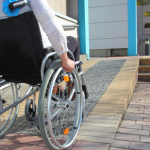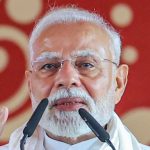World Hemophilia Day was established in 1989 by the World Federation of Hemophilia (WFH) and is observed every year on April 17th. This date commemorates the birth of Frank Schnabel, the founder of WFH. The day is meant to raise awareness about Hemophilia and other bleeding disorders, promoting early diagnosis, access to treatment, and comprehensive care for those affected.
As of today, the Kashmir Valley is home to approximately 450 patients suffering from Hemophilia bleeding disorder, with 93% of them being males and 7% females. Among these, 85% suffer from severe Hemophilia while 15% have moderate or mild forms of the disorder.
Hemophilia patients suffer from a deficiency of blood clotting proteins, which leads to spontaneous internal and external bleeding. Frequent bleeding in joints and muscles often results in permanent disability of the affected areas. Life-threatening bleeds can occur in the brain, gastrointestinal tract, throat, neck, and abdomen. Even a minor cut can cause prolonged bleeding. Often, there are no obvious reasons for the bleeding, and when it starts, life-saving Anti-Hemophilic drug (injections) must be administered within 1 to 2 hours to prevent fatal outcomes.
These medicines not only need to be available 24/7, but according to the WFH guidelines, prophylactic treatment is essential to reduce bleeding episodes. Prophylaxis means administering Anti-Hemophilic drugs two or three times a week. In recent years, Monoclonal Antibody drugs have become available, which are recommended for Hemophilia A patients and need to be administered only once a month. These drugs significantly reduce the risk of life-threatening bleeding and also improve the quality of life for patients.
A brief look into the history and scientific background of Hemophilia shows that different factor deficiencies cause different types of Hemophilia, and hence, different anti-hemophilic drugs are required. Factor I deficiency was first described in 1920. Factors II and V were identified in the 1940s, while deficiencies of FVII, X, XI, and XII were recognized in the 1950s. In 1960, FXIII deficiency was described.
Historically, Hemophilia is often referred to as the “royal disease” due to its prevalence in European royal families. Queen Victoria of England (1837–1901) was a carrier of Hemophilia B (Factor IX deficiency). She passed it on to her descendants, affecting royal families of Russia, Germany, and Spain. Her son Leopold died at 30 from a hemorrhage, and her daughter Alice passed the gene to her daughter Alix, who married Tsar Nicholas of Russia. Their son, Alexei, also had Hemophilia, and their family’s story became entwined with that of Rasputin and the Russian Revolution.
In 1937, Harvard physicians Arthur Patek and FHL Taylor identified anti-hemophilic globulin in plasma that could reduce clotting time. By the 1950s and 60s, fresh frozen plasma was used in hospitals, but it required large volumes to be effective. The life expectancy for someone with severe Hemophilia at that time was under 20 years.
The 1970s saw a breakthrough with the introduction of freeze-dried factor concentrates (VIII and IX), which could be self-infused at home. However, tragedy struck in the mid-1980s when it was discovered that HIV/AIDS and Hepatitis C were being transmitted through contaminated blood products. Nearly half of the Hemophilia patients in the U.S. became HIV positive, and many died. Before HCV testing began in 1992, about 44% of Hemophilia patients had already contracted the virus. Sadly, the Kashmir Valley also witnessed many such cases due to the use of fresh frozen plasma.
The 1990s brought advancements in safer recombinant (synthetic) factor products that were virus-free. Monoclonal antibody drugs also emerged, offering not only protection from transmissible infections but greater efficacy.
By 1995, prophylactic treatment—administered 2-3 times weekly—became common in children with Hemophilia in developed countries, allowing them to live healthier and more active lives.
But the tragedy continues in Kashmir.
Despite a 2011 ruling by the Honorable High Court directing the government to not only provide life-saving drugs but ensure their availability on a regular basis, this directive has been ignored repeatedly.
The Jammu & Kashmir Hemophilia patients face chronic shortages of these essential drugs, mainly due to the inefficiency of the Jammu & Kashmir Medical Supplies Corporation (JKMSCL).
JKMSCL delays procurement for months and employs delaying tactics in supplying drugs, endangering the lives of patients. For instance, in October 2024, GMC Srinagar submitted a requisition for supplementary drugs, but JKMSCL cited a lack of funds and refused to act. Despite an official letter from the Ministry of Health and Medical Education instructing the Corporation to procure these life saving supplimentary medicines, there was no compliance.
More than two months ago, GMC Srinagar submitted another requisition for annual supplies—but no medicines have been provided yet. For the past six months, patients have been living without access to life-saving drugs. Many are suffering from continuous joint, muscle, oral, and nasal bleeds, living under the constant shadow of death.
On this World Hemophilia Day, these patients cry out to the authorities— “Our lives are in danger. We are not asking for luxuries—just for the medicines that will keep us alive. We too have the right to live.”
(The Author is President Hemophilia Society Kashmir)








